Physical Address
304 North Cardinal St.
Dorchester Center, MA 02124
Physical Address
304 North Cardinal St.
Dorchester Center, MA 02124
Picture yourself camping at a 500-year-old farm or spending the night at Europe’s highest campsite, 1,950 meters above sea level. These amazing European campsites let you experience everything from historic hideaways to stunning UNESCO World Heritage sites.
Your perfect getaway might be a peaceful stay at a family-owned Portuguese valley with just nine spots. Maybe you’d prefer finding solitude in Spain’s Catalan Pyrenees, where only four bell tents await. European camping reveals the continent’s most beautiful hidden corners. These special places now book up quickly because they blend untouched nature with memorable adventures.
Slovenia’s ancient ash tree meadows and Norway’s narrowest fjord with its towering cliffs are just the beginning. We selected 15 incredible camping spots that will make your European journey truly unforgettable.
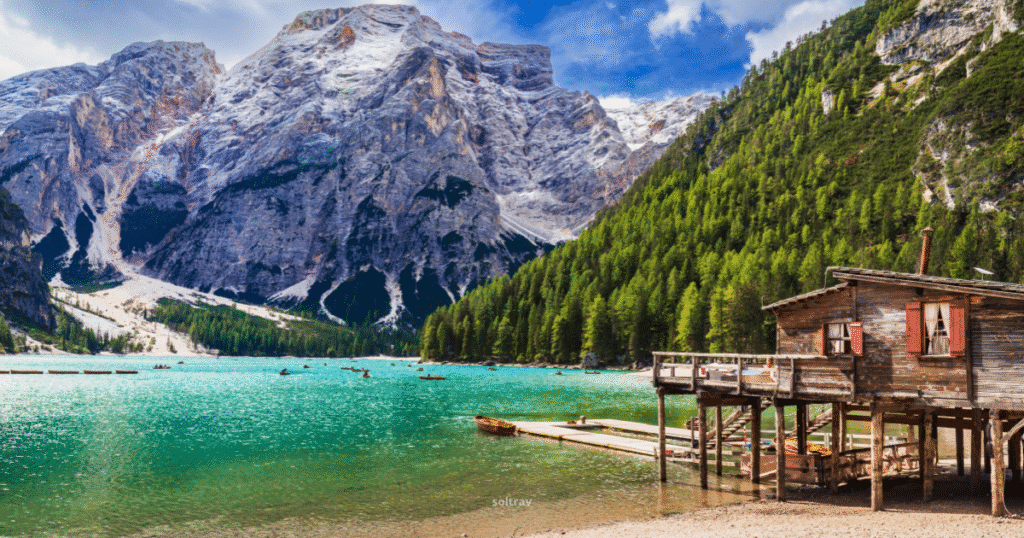
Lago di Braies sits 1,500 meters high in the Italian Dolomites and gives campers one of Europe’s most amazing experiences. Known as the “Pearl of the Dolomites,” this crystal-clear alpine lake draws people worldwide to see its emerald-green waters mirror the mountain peaks around it.
The lake’s turquoise waters create a perfect reflection of Croda del Becco’s dramatic north face that reaches 9,219 feet. As the Dolomites’ biggest alpine lake, it gets its deep waters from underground springs. Wooden rowing boats line the shore in summer and create picture-perfect scenes next to the rustic boathouse with mountains towering behind.
You can’t camp right by the lake, but Camping Olympia welcomes visitors just 20 minutes away. This spot caters to families with 200 spaces for tents and campervans. The site comes with restaurants, a heated pool, and a kid-friendly animal park.
A 3.5-kilometer trail goes around the lake and takes about 1.5 hours. This easy hike shows off the stunning landscape from different angles:
The lake marks the start of the famous Alta Via 1 long-distance trail for those seeking more adventure. Serious hikers can climb to Croda del Becco’s summit for amazing 360° views of Fanes-Sennes-Prags Nature Park.
Summer crowds can reach 15,000 people daily. The best time to visit is at sunrise when early light turns the lake into a giant mirror. Plan your trip during:
The lake has access limits during July and August because of visitor numbers.
The iconic Tre Cime di Lavaredo peaks stand as the Dolomites’ symbol just a short drive away. Prato Piazza’s mountain plateau sits 20 minutes from the lake and offers great hiking. Lake lovers should check out Lago di Dobbiaco, where Camping Toblacher See lets you pitch your tent right by the water.
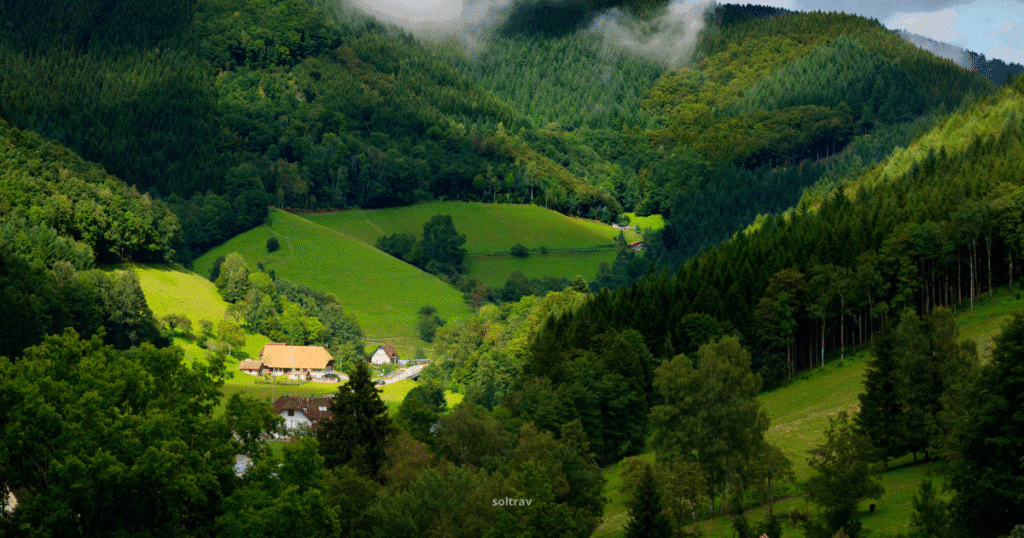
The Black Forest stretches 160km through Germany’s southwest. Its remotest valleys carry a timeless feel that makes it one of the most beautiful places in Europe for campers who seek solitude. This enchanting woodland retreat feels like stepping into a Grimm’s fairy tale, despite its name suggesting darkness rather than the verdant reality.
Mesmerizing landscapes define the Black Forest with its larch, fir, and pine forests. River-carved valleys and rippling hills rise into mountains. The region’s first national park opened in 2014, covering 100-sq-km of heather-brushed moorland and pristine coniferous forest. A UNESCO Biosphere Reserve now safeguards 632-sq-km of precious woodland, hay meadows, and moorland where wildlife roams free.
Natur-Camping Langenwald stands out as one of the best campsites in Europe with a remarkable 4.8 rating. This eco-friendly site boasts solar-heated pools, forest surroundings, and nature trails. Visitors looking for something different can sleep in converted wine barrels at Schlafen im Weinfass in Sasbachwalden.
The Black Forest’s wildlife includes these fascinating creatures:
Deer and squirrels appear most often during early morning or dusk.
The Black Forest leads the way in eco-friendly initiatives and responsible travel. Visitors should leave minimal traces in this protected environment. Designated trekking camps operate from May to October as an alternative to prohibited wild camping. These sites feature composting toilets and sit away from villages, reachable only by foot.
The Black Forest’s culinary scene celebrates local traditions with fresh ingredients from the surrounding environment. Local farm stays let guests enjoy organic dairy produce directly from the source. Höhengasthaus Kolmenhof at Martinskapelle serves some of the region’s freshest home-fished trout. Die Halde creates seasonal dishes in its romantic wood-paneled restaurant.
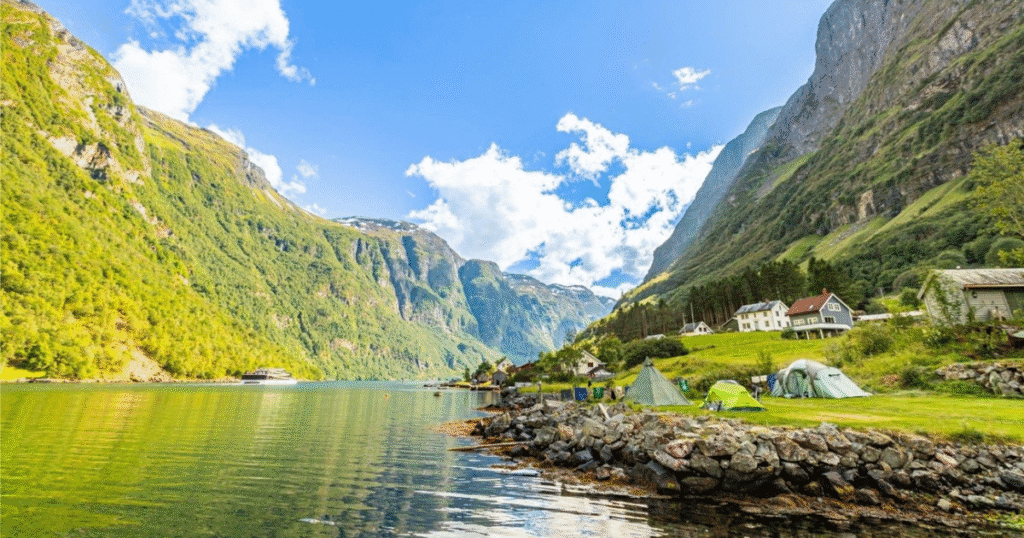
Sognefjord, known as the “King of the Fjords,” reaches deep into Norway’s heart and gives you some of the best camping in Europe with its wild dramatic settings. This amazing fjord stretches to Jotunheimen and Jostedalsbreen National Parks, making it a perfect playground for outdoor lovers who want real Nordic experiences.
The Sognefjord area will grab your attention with its diverse landforms – wide fjord landscapes, narrow fjord arms, huge mountain ranges, and stunning blue glaciers. The Nærøyfjord branch, listed as a UNESCO World Heritage Site, shows off nature’s most stunning views with massive cliff faces that drop straight into crystal-clear waters. You’ll get front-row seats to nature’s greatest show when you camp along these edges. The star-filled skies and peaceful fjords create unforgettable nights.
The Norwegian idea of “friluftsliv” (pronounced free-loofts-leev) runs through every camping experience here. This way of life means living simply and in harmony with nature. Studies show all but one of these Norwegians involve themselves in friluftsliv year-round. This outdoor spirit lies deep in Nordic culture. The region’s “allmansrätten” (right to roam) lets campers walk and set up tents almost anywhere, as long as they respect nature.
Viking history comes alive in Sognefjord’s Viking Valley at Gudvangen. The Viking town of Njardarheimr brings back ancient culture. You won’t find actors here – these are “real” Vikings of all ages who live the Viking Age lifestyle. The name “Gudvangen” means “the place of the Gods” because Nærøyfjord belongs to Njord, the God of trading and sailing.
The Gulf Stream’s warm waters keep the western coast’s summer temperatures comfortable between 15-20°C. Yet fjord weather can change quickly. Warm clothes, rain gear, and the right equipment become essential. Winter campers should get ready for tough conditions with cold temperatures and short days.
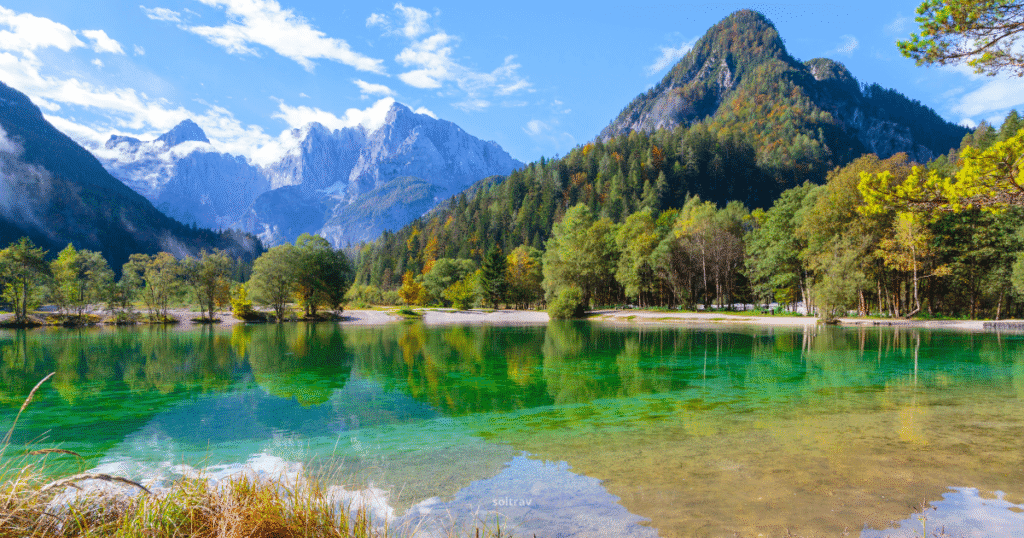
The Julian Alps stretch along Italy and Austria’s borders, making Slovenia’s wilderness camping spots some of the most beautiful places in Europe. This untouched region blends turquoise rivers with emerald lakes and snow-capped peaks. Slovenia’s green practices earned it the distinction of becoming the world’s first officially “green” country.
The warm season brings a burst of botanical treasures to the Julian Alps. The region hosts 1,600 plant species, and 19 of these varieties grow nowhere else on Earth. These alpine meadows dazzle visitors with spectacular blooms like:
The region features excellent campsites that cost about €35.37 per night, depending on when you visit and what amenities you need. Eco Camp Natura near Kranjska Gora makes a great starting point to explore Triglav National Park. Camp Korita offers one of the Alps’ most authentic experiences right beside the emerald Soča River’s “gorges”.
Protection covers about one-third of Slovenia’s land, showing the country’s dedication to nature. The Julian Alps’ camping culture promotes green guidelines and connects people with their surroundings. These campsites serve as perfect launch points to hike Slovenia’s 10,000+ kilometers of trails that wind through Alpine landscapes.
The Julian Alps give photographers endless chances to capture stunning shots. Lake Bohinj’s early morning mists create magical scenes, while afternoon sun lights up Mt. Prsivec’s steep cliffs. June offers the best time to photograph pristine wildflower meadows against mountain backdrops. The most breathtaking mountain shots come from higher viewpoints – a hike to Pec near Ribcev Laz rewards you with perfect panoramas without too much effort.
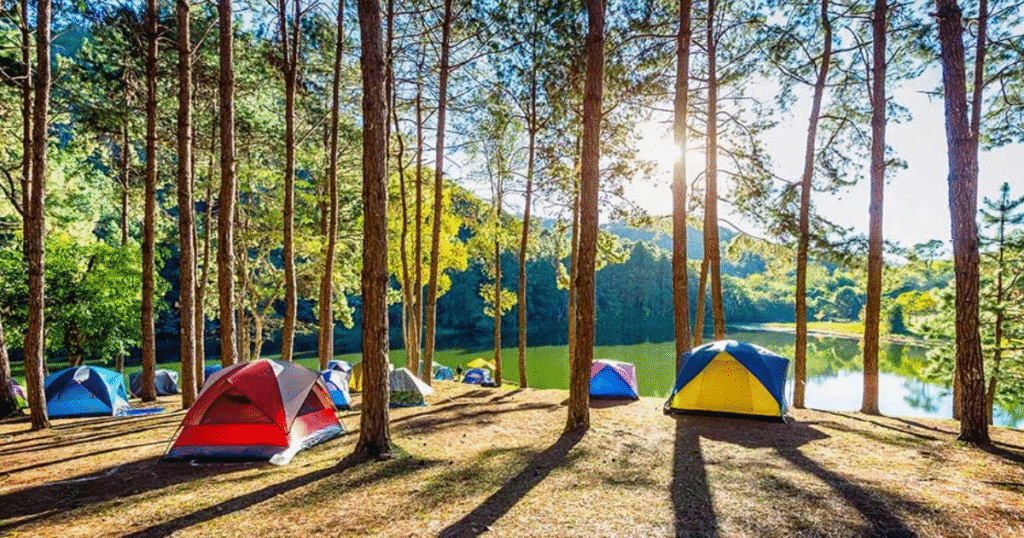
The sun-drenched hills of the Peloponnese hide ancient olive groves that are a great way to get authentic camping experiences in most beautiful places in Europe. This largely rural region features centuries-old Koroneiki olive trees that create natural sanctuaries where travelers connect with Greece’s agricultural heritage and enjoy Mediterranean serenity.
Ancient Greece lives on through the olive trees scattered across the Peloponnese landscape. Greeks started pressing olives more than 5,000 years ago, creating an agricultural tradition that still thrives. Camping Meltemi spreads across 100 acres of olive groves that lead straight to Blue Flag awarded beaches. This creates a perfect mix of shade and seaside access. Local groves showcase organically farmed trees, and some are more than 2,000 years old. These trees have such massive trunks that you can actually hide inside them!
The Peloponnese’s camping experience brings authentic Greek flavors to life. Local cuisine’s foundations are built on olive oil, with regional specialties like Tsakonian eggplant from Leonidio and artichokes. Campers love making “kagianas” – a simple yet delicious dish of tomatoes, eggs, and generous drizzles of fresh olive oil. First-time visitors quickly find that outdoor-prepared dishes taste incredibly flavorful. Even ambitious meals like stuffed vegetables and traditional desserts turn out great in this open-air setting.
The Peloponnese reveals Greece’s ancient past way beyond the reach and influence of nature’s bounty. This region holds archeological treasures where you can retrace “the legendary steps of Greek gods” and celebrate “the indomitable spirit of Olympian athletes from ages long past”. Your campsite becomes the perfect base to explore nearby ancient Corinth with its impressive Temple of Apollo and Acrocorinth fortress.
The olive harvest runs between October and January, offering a truly immersive experience. This traditional community celebration welcomes travelers to learn about and join the ancient process:
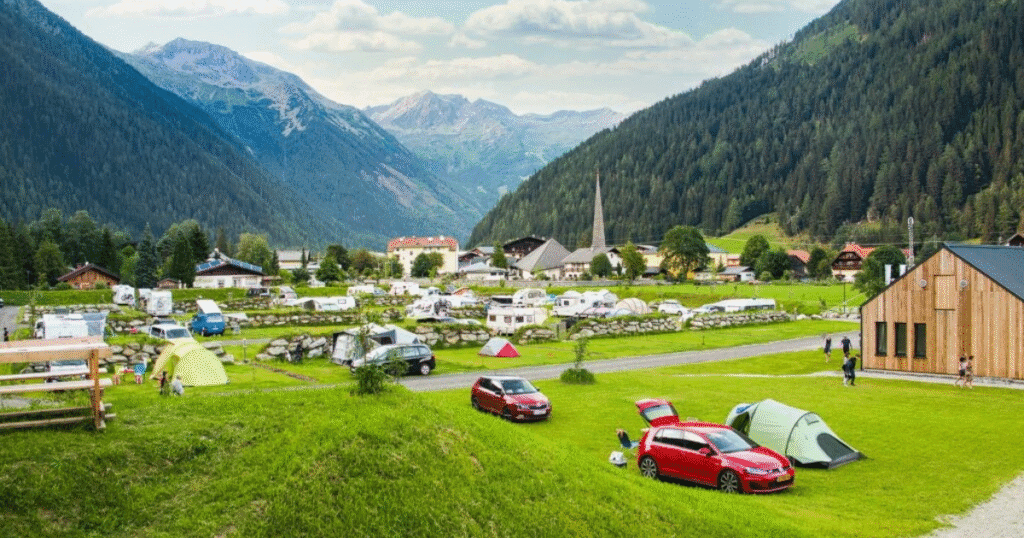
The Hohe Tauern National Park sits beneath Austria’s tallest mountain, Grossglockner. This park offers best camping in Europe with stunning glacier views. Stretching across three Austrian states, this protected alpine wonderland houses Europe’s largest glacier system and gives visitors a unique experience of wilderness camping.
Perfect launchpads for mountain adventures exist in campsites throughout the Möll and Drau valleys. These sites blend modern facilities with the rugged alpine environment. Comfort meets nature without losing the wild experience. The upper Mölltal region rewards campers with constant views of the majestic 3,798m Grossglockner peak. Trails connect to the Alpe Adria route, letting hikers journey from glacial heights to the Adriatic Sea.
Austria’s largest glacier in the Eastern Alps, the mighty Pasterze, stands as the centerpiece of this camping experience. This natural wonder shrinks faster than ever, losing 5m in height and 20m in length each year. A short 15-minute hike from the Kaiser Franz Josefs Höhe viewpoint leads to the glacier. Years ago, a funicular took visitors straight to the ice. The Grossglockner High Alpine Road snakes through 36 hairpin bends and draws nearly 900,000 visitors yearly.
Mountain huts are the foundations of Austria’s alpine identity. Cattle farmers have lived in these huts during summers while their herds graze mountain pastures for about 2,000 years. These refuges welcome visitors from mid-June until late September. Guests must bring sleeping bag liners and indoor slippers. Remote locations mean most huts take only cash, and overnight fees support the Alpine Club.
Hohe Tauern glaciers show clear signs of climate change. The year 2023 marked the 36th straight year of ice loss rather than gain in reference glaciers. The Pasterze Glacier has melted to less than half its original 11-kilometer length since 1852. All but one of these major ice losses happened after 2010. This glacial retreat affects more than just scenery – it threatens water supplies for hundreds of millions worldwide.

The Algarve’s dramatic cliffscapes along Portugal’s southwest coast create a camping paradise where the wild Atlantic Ocean meets golden limestone formations. Experienced European campers love this region. You can drift off to sleep while waves crash beneath skies filled with stars.
Hidden gems dot the Algarve coastline, and only adventurous souls know how to find them. The biodiverse Ria Formosa National Park features a network of barrier islands that make up Portugal’s “Seven Natural Wonders“. Ilha Deserta shows off 7 km of untouched beaches with crystal-clear waters. You’ll need to catch a boat from Faro Marina to reach it. Some travelers prefer to camp on the cliffs where paths lead to quiet coves that stay empty even in summer.
The Algarve’s limestone cliffs give you some of Europe’s most breathtaking ocean views. Travelers often stumble upon perfect spots “on top of cliffs overlooking stunning beaches with huge rocks jutting out of the ocean”. Nature puts on quite a show here. Persistent waves carve incredible arches while solitary rock formations stand guard in azure waters. The night sky becomes a blanket of stars, creating moments that make this spot one of the most beautiful places in Europe.
The Rota Vicentina network lets hikers explore this stunning coastline. This system has:
This 11-year-old trail system promotes eco-friendly tourism through local community stays. It pairs perfectly with camping in Europe.
The Algarve basks in 3,000 sunshine hours annually, making it one of Europe’s sunniest spots. The best camping experience depends on when you visit:
Winter brings gentle 16°C days, perfect for those who want a different kind of camping adventure.
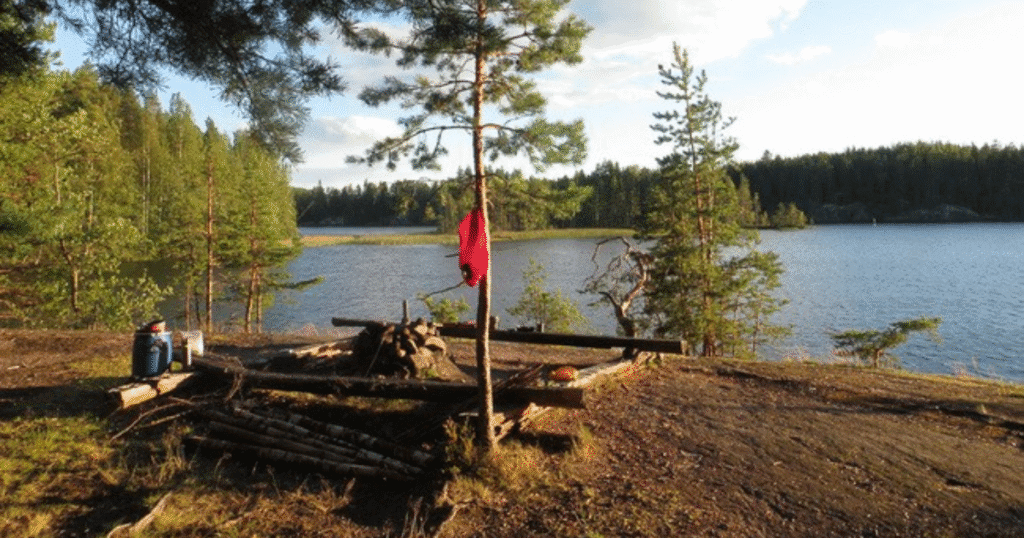
Lake Saimaa, Finland’s largest lake system, stands as a pristine paradise for camping enthusiasts. This Northern European wilderness gives visitors an unmatched view that you won’t find anywhere else on the continent. The region combines untouched nature with authentic Nordic experiences.
Nature seems to have crafted Lake Saimaa specifically for camping. Sparkling waters and rocky archipelagos surrounded by endless forests create sweeping vistas. Finnish lakeland camping remains nowhere near as expensive as other European destinations. Caravan parking costs around €20, while camping fees run approximately €5 per person per night. Koskenselkä Holiday Village and similar campsites offer everything from holiday cottages to traditional camping areas right next to the lake. Visitors can easily access hiking trails, cycling routes, and kayaking spots in the pristine wilderness.
The midnight sun creates magical camping moments from June 6th to July 7th. Golden light bathes the landscape all night long. These “nightless nights” let you enjoy activities around the clock. You can paddle across glassy lakes at midnight or take refreshing evening swims while the sun hangs on the horizon. Time seems to flow differently when day and night blur together, and nature feels closer than ever.
Finnish camping wouldn’t be complete without experiencing sauna culture. Finns consider saunas essential rather than luxurious. Traditional wood-heated saunas reach 80-110°C, and users cool off with a refreshing jump into Lake Saimaa. This simple rhythm – sauna, cool off, repeat – embodies Finnish wellness tradition. Most lakeside campsites have private saunas where guests experience authentic “saunanjälkeinen” – that deep relaxation only a proper sauna session brings.
Winter turns Lake Saimaa into an enchanting frozen wonderland. Hardy winter campers can try ice swimming in thermal survival suits, explore snowy landscapes on husky safaris, or go snowshoeing across frozen lakes. Clear winter nights might reward the adventurous with nature’s light show – the Northern Lights dancing across starry skies.
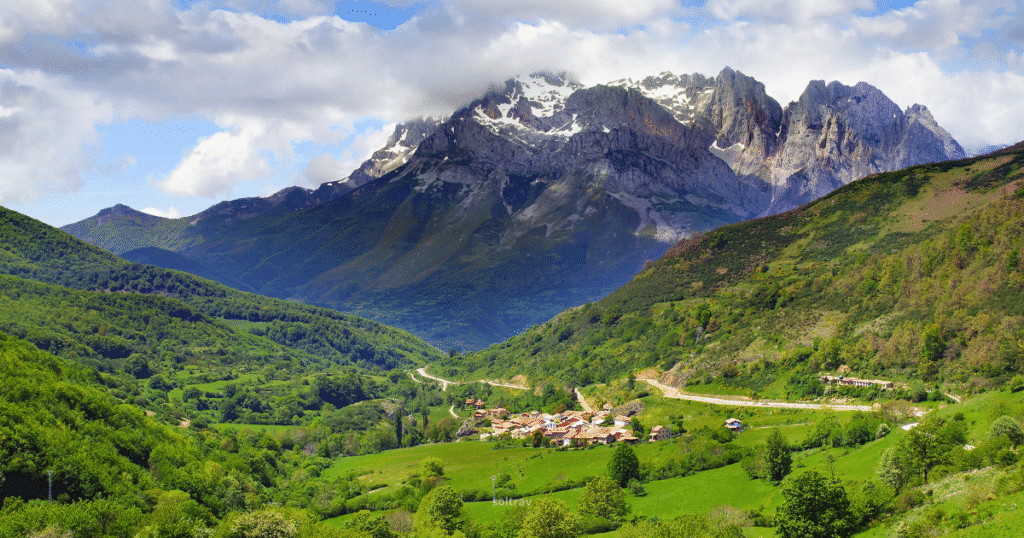
Spain’s Picos de Europa National Park features jagged limestone peaks that create one of the country’s most breathtaking wilderness landscapes. Outdoor enthusiasts will find exceptional high-altitude camping spots throughout this compact yet spectacular mountain range in northern Spain. The area’s magnificent scenery comes alive with an incredible mix of plant and animal species.
Torre Cerredo reaches elevations of 2,648 meters, where knife-edged ridges and dramatic pinnacles stand as testament to ancient glacier activity. Three distinct massifs make up the park’s 64,660 hectares, separated by deep gorges. The park’s shelters serve as perfect bases to start your mountain adventures from Easter until early December. Each shelter keeps a bivouac area ready with bunk beds and blankets for emergencies throughout the year.
The region takes an environmentally responsible approach to wilderness camping. Visitors must follow the “Leave No Trace” principles and pack out all their trash. The Picos de Europa lets you do more than just camp – it’s perfect for hiking, climbing, birdwatching and photography. Travelers can rest at Huttopia Barcelona Pirineos, situated 890 meters above sea level, before heading out to the rugged terrain.
Nature thrives here with over 1,400 plant species and 70 mammal species. You might catch sight of Cantabrian chamois as they navigate steep slopes with amazing agility. The park’s skies come alive with roughly 130 pairs of griffon vultures, golden eagles, Egyptian vultures, and booted eagles. The bearded vulture has made its return and now shares the air with native birds.
Mountain safety should be your top priority. Here’s what you need:
The Spanish meteorological office puts out specific forecasts for Picos de Europa and includes avalanche risk updates during winter.
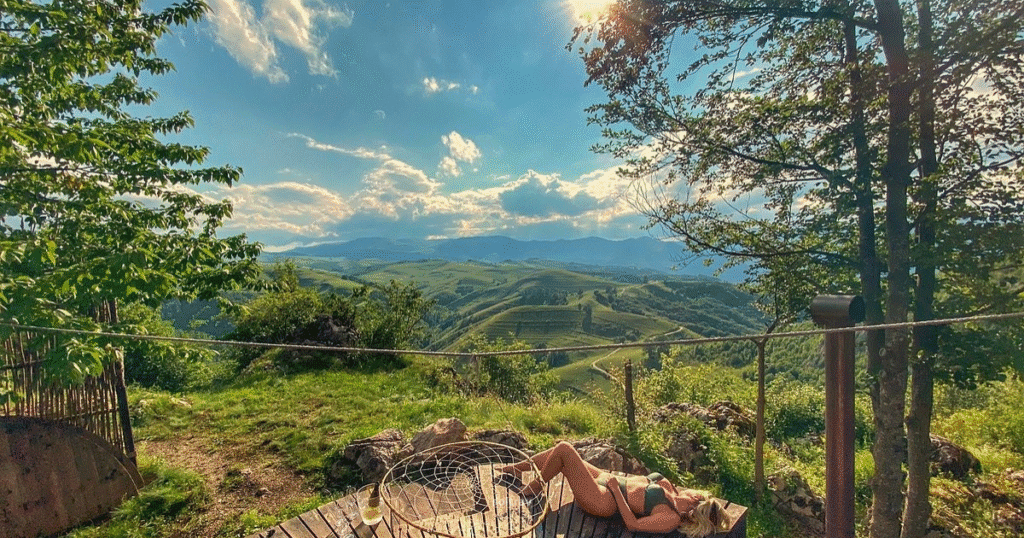
The ancient forests of the Carpathian Mountains hide Transylvania, a place many wildlife experts call Europe’s best camping destination. This magical Romanian region blends rich biodiversity with mystical landscapes that feel frozen in time. Nature lovers can find unmatched chances to connect with the outdoors while learning about medieval heritage.
The magnificent Carpathian range rules over Transylvania and takes up about one-third of Romania’s territory. The breathtaking Făgăraș Mountains hold pristine wilderness areas that conservation efforts protect. Dense forests, bright meadows, and dramatic peaks create perfect settings for wilderness camping. This mountainous sanctuary has designated camping spots that serve as great bases to head out into rugged landscapes without harming the environment.
Transylvania’s natural wonders come with remarkable Saxon villages where old traditions live on. Seven villages with fortified churches have earned UNESCO World Heritage status, including Biertan, Viscri, and Valea Viilor. Sighișoara’s preserved medieval citadel and Dracula’s birthplace features narrow streets with colorful houses that take you back through time. Most camping spots let you reach these historical gems through scenic roads that wind between forests and traditional settlements.
The region stands tall as Europe’s top spot to see wildlife in their natural homes. Transylvania gives shelter to amazing numbers of large carnivores:
European bison now thrive in the Făgăraș Mountains, with more than 75 of them roaming freely since 2020. You’ll see wildlife best at dawn and dusk, but remember to stay at a safe distance.
Transylvania’s mysterious reputation comes in part from its ties to Vlad the Impaler, the real person behind Dracula legends. Brașov lets you see sites linked to his actual campaigns, including spots where he tried to break through the city walls. Local guides tell fascinating tales about this complex historical figure and share regional folklore. The name “Gudvangen” means “place of the Gods,” showing the area’s deep mythological roots.
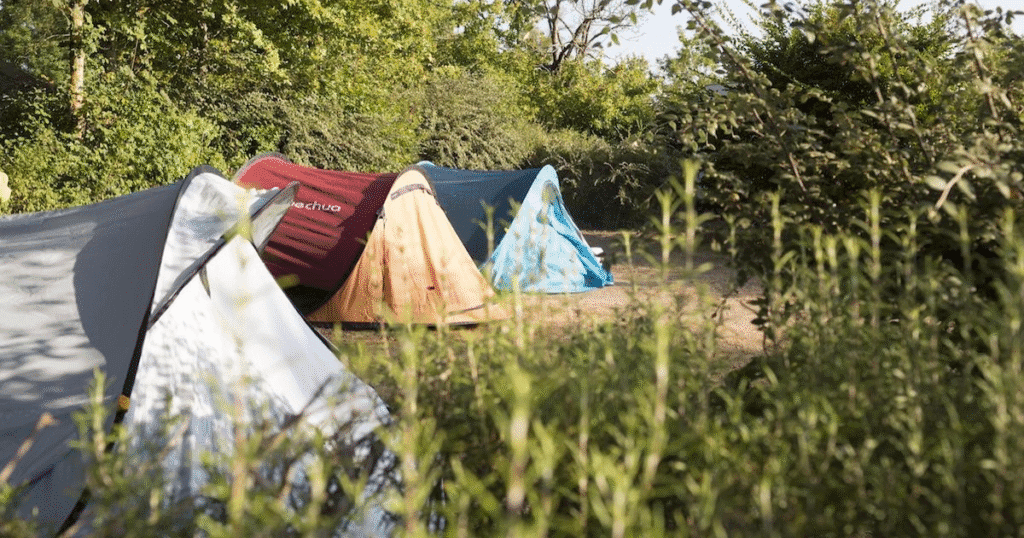
The Loire Valley, known as “The Garden of France,” is home to hidden riverside camping spots along Europe’s last untamed river. Nature’s beauty joins French heritage to create one of the best camping in Europe experiences. You’ll wake up to birds singing and water flowing gently past your tent.
Le Moulin Fort has some of the best spots along the River Cher’s banks. Campers love these premium locations where weeping willows mirror themselves in quiet waters. The spot feels like a peaceful hideaway. Camping D’Angers sits where four rivers meet the Loire and gives you access to both riverbanks and Lac du Maine. You can kayak, canoe, or paddleboard here. Many sites let you step right into the water – a special treat during your holiday.
The Loire à Vélo cycle route runs 800km from Nevers to Saint-Nazaire. This route stands out as France’s first marked and safe cycling path. Your journey takes you through:
Summer travelers can take their bikes on the Train Vélo Loire between Orléans and Nantes without extra charges.
A short walk from Le Moulin Fort leads you to Château de Chenonceau, which stretches right across the water. The Royal Château de Amboise stands nearby, where French kings lived and Leonardo da Vinci was laid to rest. Huttopia Saumur’s hilltop location gives you stunning views of Château de Saumur, the river, and surrounding forests.
Loire Valley’s vineyards are perfect for wine enthusiasts. Local winemakers often host tasting sessions to showcase their regional wines. Bordeaux, the second-largest wine region worldwide, welcomes campers with motorhomes and tents. More than 2,000 French vineyards have camping spots, and many let you stay overnight among the grapevines.
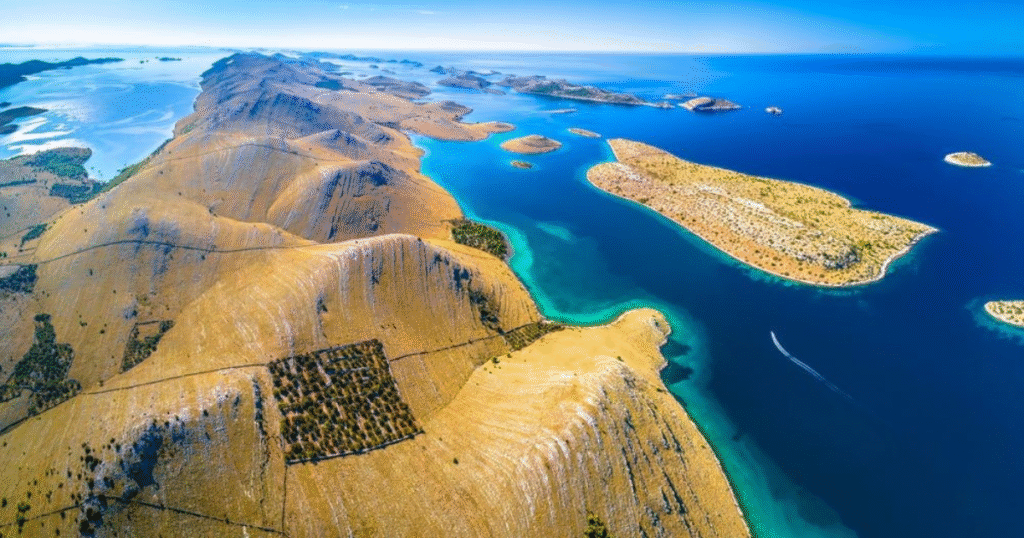
Like precious gems scattered in the central Adriatic Sea, the Kornati Islands create a mesmerizing archipelago that has some of the best camping in Europe for adventurers looking for pristine maritime landscapes. This remote island group has 89 islands, islets, and rocks spread across 218 square kilometers. The sea dominates more than three-quarters of the national park’s total area.
The Kornati archipelago’s most striking features are its impressive cliffs—locals call them “crowns”—facing the open sea. These dramatic limestone formations create stunning panoramas. The tallest cliffs reach impressive heights on Klobučar island (80 meters), Mana island (65 meters), and Rašipa Vela island (64 meters). The unique mix of jagged karst limestone rocks, desert plains, and lush forests creates a landscape that looks otherworldly compared to Croatia’s popular mainland spots.
One of the region’s richest marine ecosystems thrives beneath the surface. The crystal-clear waters let snorkeling and diving enthusiasts see the diverse underwater world easily. Secluded bays perfect for swimming dot the park, and several spots work great for overnight boat anchoring. The azure waters create a stunning contrast with the islands’ white-gray stones, making it a photographer’s paradise.
Getting to this remote paradise needs some planning since transportation options are limited. You can reach the Kornati National Park in your own boat, a rental vessel, or by joining tours that start from many coastal cities. The archipelago lies about 7 nautical miles from Murter and roughly 15 nautical miles from both Šibenik and Zadar. A broader island-hopping trip from Split to Dubrovnik could include Kornati as a perfect stop.
The park’s protected status comes with strict conservation rules. Camping happens only at three authorized sites: Ravno, Žakan, and Levrnaka. Visitors need daily entrance tickets, which they can buy at reception areas or sales outlets. The islets of Purara, Klint, Volić, Mrtenjak, Klobučar, and Mali and Veliki Obručan get special protection—nobody can visit without special permission. Fishing needs specific permits. Environmental protection rules ban littering, wildlife disturbance, and unauthorized fires.
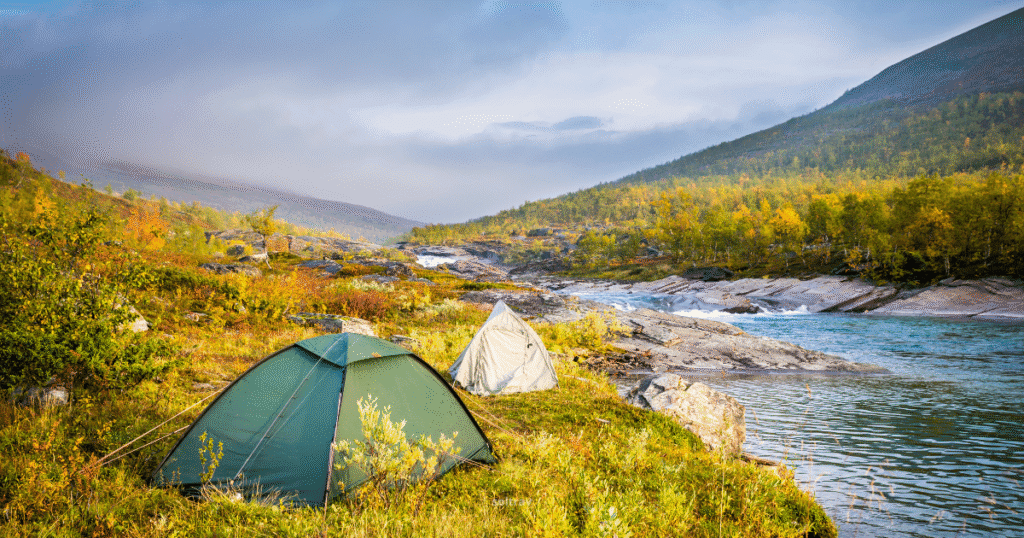
Swedish Lapland’s pristine wilderness above the Arctic Circle gives campers an exceptional experience. Nature puts on an extraordinary show here. Visitors can see the mesmerizing northern lights and summer’s endless daylight.
The Arctic sky comes alive with spectacular northern lights from late autumn to early spring. Green waves suddenly dance across the night sky as solar particles hit Earth’s atmosphere at 45 million mph. Many first-time visitors say this natural light show feels like time stands still. Aurora Safari Camp stands out as your best viewing spot. It’s the world’s first glamping site that celebrates Arctic Sweden’s unique climate away from city lights.
“Allemansrätten” (Everyman’s Right) lets everyone enjoy Swedish wilderness. This constitutional right means you can hike, bike, canoe and camp almost anywhere. You can even set up on private land if you respect nature and follow basic rules. The freedom opens up amazing chances to explore untouched environments. Good camping manners still matter though. You should leave no trace, handle waste properly, and keep your distance from wildlife.
The midnight sun reshapes the scene From June 6th to July 7th, bringing “nightless nights”. The sun stays visible at midnight, so you can take midnight hikes or paddle on mirror-like lakes while Europe sleeps. These endless days create a dreamlike feeling. Your sleep patterns might get thrown off even though the surroundings are magical.
Arctic winter camping needs careful planning. The temperature often drops to -35°C (-31°F), so you’ll need special gear and know-how. Here’s what keeps you safe:
The challenges are worth it. Well-prepared winter campers can try ice swimming in thermal survival suits or watch the northern lights paint the snowy landscape.
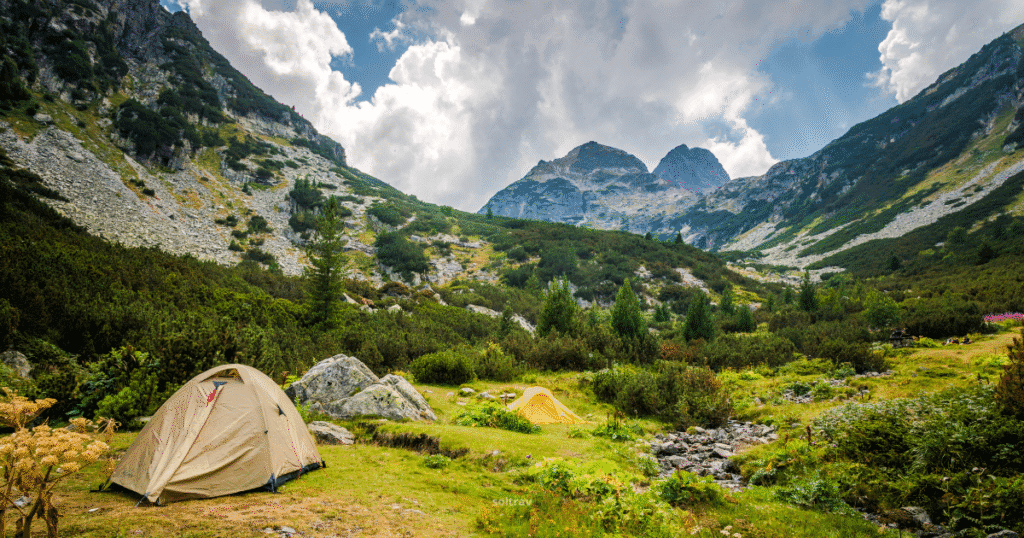
The Rila Mountain range in Bulgaria’s southwestern region features some of the best campsites in Europe. Alpine lakes mirror towering peaks in crystal clear waters. This mountain sanctuary rises to become Bulgaria’s highest range, creating a perfect backdrop for wilderness camping adventures.
The Rila Mountains showcase Bulgaria’s most impressive views. Several peaks reach staggering heights. Endless forests and rich biodiversity make this mountain paradise perfect to explore. Camping Bor serves as an excellent base for people looking to escape busy city life. The location gives easy access to many mountain routes. Nature’s stunning vistas remain beautiful whatever the season. Winter brings thick snow cover that creates perfect conditions for ski enthusiasts.
Bulgaria’s largest Eastern Orthodox monastery, the Rila Monastery, stands as a UNESCO World Heritage Site since 1983. Saint John of Rila (Ivan Rilski) founded this spiritual sanctuary in the 10th century. The monastery is a vital piece of Bulgarian national identity. The complex stands as a masterpiece of Bulgarian National Revival architecture. Among its treasures lies Rafail’s Cross – a wooden cross with 104 religious scenes and 650 miniature figures carved into it. The monk spent 12 years creating this masterpiece, which ultimately cost him his eyesight.
Bulgarian campers value green practices and prefer to use designated sites. The area near Sapareva Banya combines idyllic nature with modern comforts. Visitors can enjoy healing thermal waters and comfortable pitches under starlit skies. Local conservation rules protect this magnificent environment by restricting camping in protected areas and near natural landmarks.
The Seven Rila Lakes stand as Bulgaria’s most beautiful lake group, nestled between 7,000 and 8,000 feet in elevation. Streams connect these glacial lakes and create waterfalls and cascades. Each lake’s name reflects its unique features—”The Tear,” “The Eye,” and “The Kidney”. The delicate ecosystem requires protection, so swimming remains off-limits. Visitors can walk around the lakes from July through October when snow-free trails allow access.
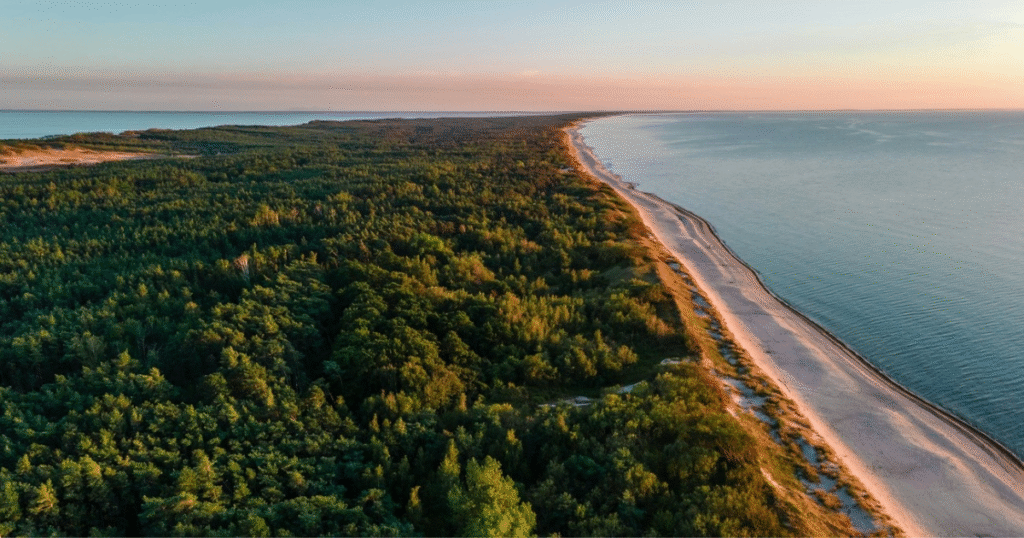
The Polish Baltic coastline combines fragrant pine woodlands with seaside views to create one of the best campsites in Europe. Nature lovers will find a perfect blend of woodland peace and coastal adventures. The area’s dense forests meet golden beaches to give campers a mix of woodland serenity and seaside exploration.
Locals call this stretch of coast the “Sahara of Poland” due to its vast sand dunes that rank among the largest in Europe. Slovenský National Park near Leba shows off these magnificent formations through its network of hiking and biking trails. A remarkable 35-kilometer coastal path runs from Leba to Rowy. The Wollin National Park engages visitors with its dense forests and towering cliffs that reach up to 95 meters. These dramatic features create perfect spots for wilderness camping.
Beautiful beaches with fine golden sand stretch along Poland’s 500-kilometer coastline from Świnoujście in the west to Krynica Morska in the east. Many campsites nestle among sweet-smelling pine forests just steps away from these wide sandy shores. Summer brings water sports rental centers to beach promenades. Cyclists can ride the legendary Baltic Sea coastal path—a well-laid-out 500-kilometer route from Usedom to Gdansk.
Summer months bring vibrant festivals to the Polish Baltic coast. Seaside resorts like Sopot, Gdynia, and Hel blend modern amenities with traditional experiences. Kolobrzeg stands out as a prominent spa town that draws visitors to its sandy beaches and healing facilities. Food lovers should try the region’s fish specialties, with smoked and pickled herrings from beach stalls being local favorites.
The Baltic coastline draws amber hunters searching for this fossilized tree resin, often called “Baltic gold.” Gdansk serves as the amber capital where visitors can learn amber processing techniques in local workshops. Beach combing becomes extra rewarding after storms wash fresh pieces ashore. This unique activity makes a perfect adventure for families discovering Poland’s coastal treasures.
Europe’s lesser-known camping spots give travelers an unmatched blend of untouched wilderness and cultural heritage. Nature’s finest displays await at these 15 locations – from Swedish Lapland’s dancing northern lights to the Italian Dolomites’ crystal-clear alpine lakes.
Each spot presents a different outdoor adventure. Towering peaks challenge hikers with stunning views, while coastal locations let campers drift off to ocean sounds. History lives in ancient forests, and Mediterranean ecosystems thrive undisturbed on remote islands.
Green practices will keep these natural wonders intact for future generations. Local guidelines and wildlife protection at designated campsites will give these beautiful places a chance to stay pristine. Travelers can immerse themselves in local traditions, from Finland’s saunas to Portugal’s fishing heritage.
These spots stand as Europe’s remaining wild places. Your own wilderness adventure awaits with proper planning and preparation among these amazing destinations. A tent, outdoor spirit, and Europe’s star-filled skies will create memories that last forever.
Q1. Is wild camping allowed in Europe? Wild camping is only legally permitted in a few European countries, including Scotland and Scandinavian nations like Sweden, Norway, Finland, and Iceland. However, even in these places, campers should avoid private property and nature reserves. In most other European countries, camping is restricted to designated campsites.
Q2. What are some of the best countries for camping in Europe? Some of the best countries for camping in Europe include Sweden, Finland, and Scotland. These countries offer beautiful natural landscapes and more relaxed regulations for wild camping. However, it’s important to familiarize yourself with local laws and practice responsible camping wherever you go.
Q3. How can I find unique camping spots in Europe? To find unique camping spots in Europe, consider exploring less touristy areas like the Faroe Islands, remote parts of the Alps, or coastal forests along the Baltic Sea. Research local regulations, use camping apps, and be prepared to venture off the beaten path. Always prioritize Leave No Trace principles to preserve these beautiful locations.
Q4. What should I consider when wild camping in Europe? When wild camping in Europe, consider the local laws and regulations, respect private property, and avoid protected areas. Choose your campsite carefully, arrive late and leave early, and always practice Leave No Trace principles. Be prepared for various weather conditions and bring appropriate gear. It’s also wise to have a backup plan in case wild camping isn’t possible in a particular area.
Q5. Are there any unique camping experiences in Europe? Europe offers many unique camping experiences, such as staying in ancient olive groves in Greece, camping near glaciers in the Alps, or pitching a tent under the Midnight Sun in Scandinavian countries. You can also find opportunities to camp near historic sites, in national parks with diverse wildlife, or along scenic coastal areas. Each region offers its own distinct natural beauty and cultural experiences.
[1] – https://www.onisecoturismo.es/en/discover/the-heart-of-the-picos-de-europa/
[2] – https://expeditionportal.com/destination-lago-di-braies-dolomites-italy/
[3] – https://throneandvine.com/camping-in-the-dolomites/
[4] – https://off-campers.com/en/blog/camping-on-the-polish-baltic-coast
[5] – https://www.camping-olympia.com/en/lago-di-braies-camping/
[6] – https://www.danflyingsolo.com/portugal-multi-day-long-distance-trails/
[7] – https://www.regent-holidays.co.uk/blog/experience-the-midnight-sun-in-finland-a-guide-to-the-best-viewing-spots/
[8] – https://www.climate.gov/news-features/understanding-climate/climate-change-mountain-glaciers
[9] – https://www.moonhoneytravel.com/austrian-mountain-huts/
[10] – https://toriboeck.com/blog/2017/6/30/hiking-along-portugals-coast-with-the-rota-vicentina
[11] – https://parquenacionalpicoseuropa.es/plan-your-visit
[12] – https://www.wildtransylvania.com/p/safety-tips-bears.html
[13] – https://travelcarpathia.com/carpathian-wildlife/
[14] – https://www.campingfrance.com/uk/our-themes/lakeside-and-riverside-campsites/pays-de-la-loire
[15] – https://en.flowercampings.com/holidays/campsite-loire-velo
[16] – https://camping-ugljan.com/en/natural-attractions/national-park-kornati/
[17] – https://www.intoasturias.com/trip/alpine-birds-picos-de-europa/
[18] – https://crazy4croatia.com/kornati/faq-kornati/what-are-the-rules-in-kornati-national-park/
[19] – https://www.pincamp.com/camping-vacation/baltic-sea-poland
[20] – https://www.travelsinorbit.com/practical-guide-to-winter-hiking-and-camping-expeditions-part-2/
[21] – https://www.reddit.com/r/camping/comments/2jtfw2/camping_in_the_arctic_how_not_to_freeze_to_death/
[22] – https://en.wikipedia.org/wiki/Rila_Monastery
[23] – https://www.aurorasafaris.com/aurora-safari-camp/
[24] – https://www.tripadvisor.com/AttractionProductReview-g274725-d19844101-1_hour_Gdansk_Amber_Workshop_Tour-Gdansk_Pomerania_Province_Northern_Poland.html
[25] – https://www.pleinair.it/en/traveling-in-a-camper/Europe/austria/in-a-camper-in-Austria-in-the-upper-Moll-valley/
[26] – https://wwf.panda.org/discover/knowledge_hub/where_we_work/alps/problems/climate_change
[27] – https://www.nationalgeographic.com/travel/article/chefs-innkeepers-austrias-mountain-huts-food-lovers
[28] – https://www.siestacampers.com/blog/explore-algarves-secret-islands
[29] – http://travelastheygrow.com/top-wild-camping-spots-algarve/
[30] – https://motorhomeeurope.com/wild-camping-spots-algarve/
[31] – https://algarvegenius.com/9-best-cliff-formations-with-breathtaking-ocean-views-in-algarve/
[32] – https://www.algarvetips.com/algarve/climate/
[33] – https://portugalgetaways.com/en-us/destination/algarve/plan-your-trip/weather-in-algarve
[34] – https://www.visitsaimaa.fi/en/finland-camping-saimaa/
[35] – https://www.visitfinland.com/en/product/7f09f8d5-e13f-4043-a973-5967d7500191/koskenselka-camping-at-the-lake-saimaa-in-puumala/
[36] – https://www.visitrovaniemi.fi/midnight-sun-experiences-in-rovaniemi/
[37] – https://www.nordicvisitor.com/blog/finnish-sauna-culture-tradition/
[38] – https://www.visitsaimaa.fi/en/best-winter-experiences-in-lake-saimaa-region/
[39] – http://www.iberianwildlife.com/picos-europa/flora-fauna-picos-europa.htm
[40] – https://theindianface.com/en-us/blogs/news/10-incredible-places-to-camp-in-picos-de-europa
[41] – https://www.campingdirect.com/en/camping-spanish-pyrenees
[42] – https://www.tripadvisor.com/Attraction_Review-g317135-d321326-Reviews-Villages_with_Fortified_Churches-Transylvania.html
[43] – https://www.exploratoryglory.com/travel-blog/romanias-best-kept-secret-the-medieval-villages-of-transylvania
[44] – https://www.balkantrails.com/ultimate-travel-guide-to-transylvania/
[45] – https://www.going.com/guides/transylvania-the-mysterious-region-where-a-legend-was-born
[46] – https://www.hipcamp.com/journal/camping/the-best-riverside-campsites-in-the-loire-valley/
[47] – https://www.touraineloirevalley.co.uk/plan-your-holidays/touring-around/biking/cycling-loire-valley-loire-by-bike/
[48] – https://homeonwheels.co.uk/exploring-the-bordeaux-wine-region
[49] – https://www.go4motorhomerental.com/scenic-drives/france/camping-frances-wine-regions/
[50] – https://www.camping-biograd.com/en/kornati-national-park/
[51] – https://np-kornati.hr/index.php?option=com_content&view=article&id=81&itemid=281&lang=en
[52] – https://www.roughguides.com/articles/practical-guide-island-hopping-croatia/
[53] – https://visitmurter.com/destinations/np-kornati/informations/useful-information
[54] – https://www.adriaticsailor.com/rules_of_conduct/sailing_adriatic/13/charter_portal/3014/692/EN
[55] – https://expeditionfoods.com/blogs/news/arctic-circle-a-wild-camping-experience
[56] – https://www.honeytrek.com/wild-sweden/
[57] – https://heritagewanderlust.com/all-you-need-to-know-about-camping-in-sweden/
[58] – https://www.swedishlapland.com/stories/the-midnight-sun-finally/
[59] – https://alicesadventuresonearth.com/how-to-see-the-midnight-sun-in-finland/
[60] – https://community.goodsam.com/discussions/traveltrailerforum-board/camping-well-below-freezing—sweden-over-winter/2354376
[61] – https://saariselka.northernlightsvillage.com/packages-and-offers/p9-midnight-sun-family-adventure-4night-package
[62] – https://bulgariatravel.org/tourism-types/camping-tourism/
[63] – https://luckybansko.com/camping-bor-p161725/
[64] – https://www.camping.info/en/country/bulgaria
[65] – https://goframetheworld.com/bulgarian-mountains/
[66] – https://www.bulgariahiddengems.com/post/camping-rules-in-bulgaria
[67] – https://7lakescamping.com/en/home-2/
[68] – https://www.connollycove.com/the-seven-rila-lakes-guide/
[69] – https://www.sofiadaytours.com/blog/seven-rila-lakes-most-popular/
[70] – https://bags-always-packed.com/7-rila-lakes/
[71] – https://camprest.com/en/campsites/poland/baltic-sea
[72] – https://travelandkeepfit.com/en/2021/11/27/lago-di-braies-the-ultimate-guide-about-one-of-the-most-beautiful-lakes-in-dolomites/
[73] – https://throneandvine.com/exploring-lago-di-braies/
[74] – https://fullsuitcase.com/lago-di-braies-pragser-wildsee/
[75] – https://www.lonelyplanet.com/articles/going-green-black-forest
[76] – https://www.camping.info/en/popular-region/black-forest
[77] – https://www.tripadvisor.com/ShowUserReviews-g187282-d10747729-r599840367-Natur_Camping_Langenwald-Freudenstadt_Baden_Wurttemberg.html
[78] – https://www.schwarzwaldportal.com/en/wild-animals-in-the-black-forest.html
[79] – https://www.germany.travel/en/nature-outdoor-activities/black-forest-national-park.html
[80] – https://www.komoot.com/collection/1795967/special-overnight-stays-and-trekking-camps-in-the-black-forest
[81] – https://www.mt-campingsnorway.com/popular-destinations-in-norway/the-sognefjord-the-king-of-the-fjords-in-norway
[82] – https://en.vikingvalley.no/
[83] – https://en.sognefjord.no/accommodation/camping-campsites/
[84] – https://www.bbc.com/worklife/article/20171211-friluftsliv-the-nordic-concept-of-getting-outdoors
[85] – https://www.hellyhansen.com/journal/friluftsliv-the-norwegian-art-of-outdoor-life?srsltid=AfmBOoqbN_lrdWlM_trdoHICwlXayhFio6THyrgX8PKe4uCjrzytIdXg
[86] – https://en.visitbergen.com/things-to-do/explore-the-viking-village-njardarheimr-in-gudvangen-p5628363
[87] – https://nordicventures.com/norway-travel-guide/norway-weather-climate/
[88] – https://www.skyhookadventure.com/blog/wild-camping-norway-fjords
[89] – https://www.nationalparkstraveler.org/2024/09/slovenias-triglav-national-park-where-flower-symbolizes-natures-power-and-ability-avenge
[90] – https://www.camping.info/en/popular-region/julian-alps
[91] – https://climbtriglav.com/triglav-national-park-camping/
[92] – https://www.slovenia.info/en/stories/campsites-in-slovenia-your-contact-with-nature
[93] – https://www.slovenia.info/en/stories/top-10-campsites-in-alpine-slovenia
[94] – https://slovenia-trips.com/blog/best-travel-photo-locations-in-slovenia/
[95] – https://www.naturetrek.co.uk/tours/slovenia-alpine-flowers-of-the-julian-alps
[96] – https://traveler.marriott.com/greece/celebrate-greek-olive-harvest/
[97] – https://www.campingmeltemi.gr/en/
[98] – https://www.eumelia.com/event/olive-harvest-retreat-07-11-2025/
[99] – https://greeceinsiders.travel/traveling-through-greeces-culinary-traditions/
[100] – https://expeditionportal.com/forum/threads/an-authentic-greek-mediterranean-delicacy-for-camping-overlanders-favorite.173427/
[101] – https://www.tavernamag.com/food-and-wine/camping-food/
[102] – https://www.entiretravel.com.au/articles/must-see-ancient-sites-in-the-peloponnese-region
[103] – https://www.camperstop-olivetree.com/
[104] – https://nationalpark-hohetauern.at/en/camping/